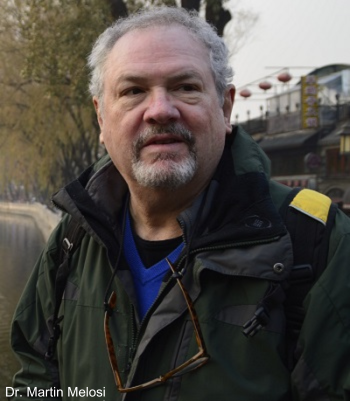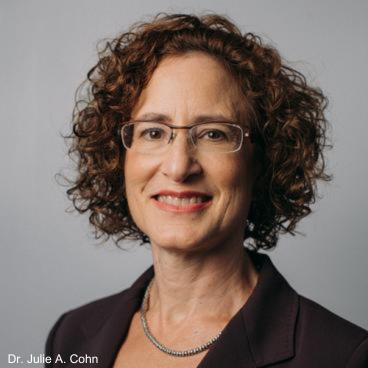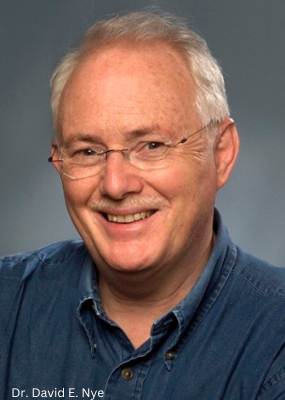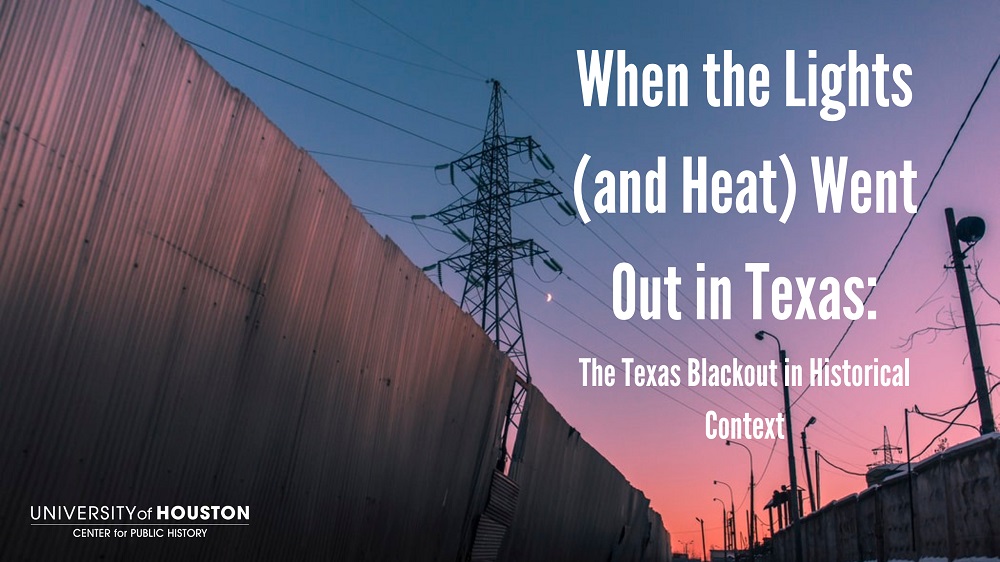From the CPH Archives: When the Lights (and Heat) Went Out in Texas
As we continue to recover from the disruption and wide-spread electricity outages caused by Hurricane Beryl earlier this month, we thought revisiting a previous CPH Lecture Series panel on the 2022 Texas blackout would provide some historical perspective for these recent concerns related to the power grid.
Following the state-wide power blackouts in Texas caused by Winter Storm Uri in February of 2022, the Center for Public History hosted a panel of guest speakers to discuss the historical precedent of blackouts as well as their root causes and long-term consequences. These guest speakers included Dr. Martin Melosi, Dr. Julie A. Cohn and Dr. David E. Nye. Dr. Joseph Stromberg served as moderator.
Dr. Martin Melosi, Hugh Roy and Lillie Cranz Cullen Professor Emeritus at the University of Houston, and expert on environmental, energy, and urban history, began by touching briefly on the role blame has played in the response to the 2022 blackout. He stated that “sorting out causes and impetuses” usually begin with the blame game. From blaming “capricious mother nature” and civilian frustrations, the narrative quickly evolves to power companies and politicians pointing fingers at “everyone but themselves.”

Trying to clear away the confusion of the "blame game", to Dr. Julie A. Cohn explained how the power grid is structured in Texas, what causes blackouts and what the long-term consequences of blackouts are. Dr. Cohn is a researcher of energy infrastructure in the UH Center for Public History, and she noted that the blackout caused by Winter Storm Uri was not unusual per se. Blackouts often occur as a result of extreme weather events. To explore what did make the blackout unusual, she turned to a list of “proximate causes” and “long-term issues.”
The first and most obvious of these causes Dr. Cohn listed was that the temperature dropped, during Winter Storm Uri, to unprecedented levels. She pointed out Dallas —the most northern of the large Texas cities—had not seen weather like this in seventy years. On top of that, these below-freezing temperatures persisted for multiple days. The low temperatures, combined with loss of power for an average of 49 hours, led to over 246 Texas deaths, according to the Department of State Health Service.
In terms of causing power outages, the cold caused parts of power plants and even gas pipes to freeze, preventing them from delivering power to the grid. Coupled with this, pipeline runners themselves failed to file paperwork properly, which would have designated them as an essential service. This meant that when the time came, the pipeline didn’t have electricity to send to power plants in the first place.
In terms of the less proximate of causes, Dr. Cohn details the structure of the Texas power grid and how aspects here led and may continue to lead to blackouts.

As readers are likely familiar with by now, the Texas grid is controlled by ERCOT -- the Electric Reliability Council of Texas, an independent system operator (ISO) organization that coordinates and manages that majority of Texas' power needs.1 The state panhandle utilizes Southwest Power Pool and was largely able to retain power during the freeze. However, unlike the rest of the country, which exchanges power across states and grids in an interconnected system, Texas’ grid is completely isolated.
Dr. Cohn points out that this autonomy often benefits Texans, as we remain unaffected by breakdowns and power failures elsewhere, but in the case of a severe winter storm and those like it, where Texas is the one experiencing a crisis, the state was unable to mitigate the issue with power from other grids.
A further complication is that the electricity market in Texas is divided into four parts. There are the power generators themselves —i.e., the power plants and stations themselves, which are scattered across the state— which operate on a free market system, and sell power in terms of “reverse output.” This is supposed to incentivize the sale of surplus power, which can be used to invest in improvements of the system, most pertinently in this case, winterization. As was made evident during Winter Storm Uri, this was not the case.
There are also the transmission networks—the powerlines that dot our roads—controlled by ERCOT. Then, there’s the disbursement market, which delivers power to individual businesses, and which is controlled by Centerpoint. Both entities have their rates set by the Public Utility Commission of Texas.
Lastly there is the market that sells energy directly to individual citizens, which give customers the option to choose between retail and wholesale energy and rates. While retail energy involves buying power from a third party, which secures power from the wholesale market and sells it to you at pre-determined rates, wholesale energy is bought directly from the power plants and rates may soar or drop according to the market.
Dr. Cohn pointed out here that while wholesale energy would often save customers money, as customers can take advantage in drops in the market and allows them to bypass the middleman, in the instance of the winter storm, wholesale customers who didn’t lose power suffered massive bills, to an upwards of $19,000.
Dr. Cohn went on to say that while this 4-part system might benefit Texas economically, it may lead and has led to massive coordination issues in a system where operators need power supply to meet power demands.
As Winter Storm Uri met the Texas mismanagement of resources, demand and supply threatened to overwhelm the grid, and ERCOT called for controlled power outages, which were done to prevent what Dr. Cohn calls a “total system failure.” These outages lasted in some instances until Friday, February 19th. For context, outages began on February 15th, meaning that some Texans were without power, and more pertinently heat, for up to four days in freezing, even single digit temperatures.

Dr. Cohn turned the discussion over to Dr. David Nye, Professor Emeritus of American Studies at the University of Southern Denmark and author of When the Lights Went Out: A History of Blackouts in America. His presentation sought to contextualize the Texas winter storm by looking at the history of American blackouts, particularly noting the feelings and experiences of people living through those massive losses of power.
Dr. Nye began with the 1965 Northeast outage —the first major blackout in American history— knocking electricity out for a great part of the northeast area and some regions of Canada. He details that this blackout had an almost celebratory feeling to it, as commuters in New York, stranded downtown, danced and partied while those without power in their homes held feasts with their neighbors. He likens this blackout to one in 2003, which also had a celebratory feel, and credits these moods to relief, as both outages began with fears of outside attacks —fears that were ultimately proven untrue.
The 1977 blackout, also in New York, was different. The loss of power revealed new levels of social discontentment and featured instances of widespread theft and even arson. Dr. Nye credits this to pre-existing feelings of greater racial and economic turmoil.
Dr. Nye finishes, then, by remarking that in terms of the feeling and experiences of blackouts, Winter Storm Uri may represent a new chapter to examine. Considering lives lost, and Texas’ overall difficulty in dealing with such an unprecedented weather event, the mood could hardly be remarked as celebratory.
Watch the full discussion at https://uh.edu/infotech/services/streaming-media/events/public-history/lights-out-in-texas/.
To find out more about the panelists and their research:
Dr. Martin Melosi: https://upittpress.org/authors/martin-v-melosi/
Dr. Julie A. Cohn: https://www.bakerinstitute.org/expert/julie-cohn
Dr. David E. Nye: https://mitpress.mit.edu/author/david-e-nye-2752/

1. https://www.ercot.com/files/docs/2022/02/08/ERCOT_Fact_Sheet.pdf